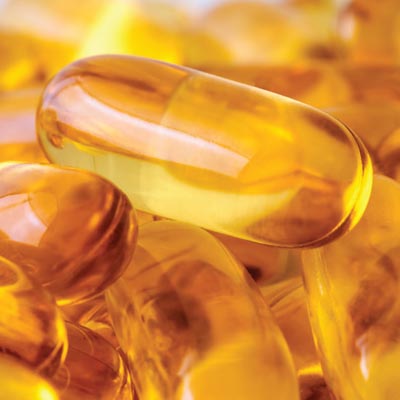Quick Studies: a snapshot of the latest research on diet, exercise, and more

Cozine - stock.adobe.com.
Don’t Overdo D

You need vitamin D to absorb calcium and build bones. But more isn’t better.
Researchers randomly assigned 311 adults aged 55 to 70 to take one of three daily doses of vitamin D: 400 IU, 4,000 IU, or 10,000 IU. Their blood levels ranged from 12 to 50 nanograms per milliliter when the study started, so some were in the “inadequate” range (12 to 20 ng/mL). None were “deficient” (less than 12 ng/mL).
After three years, arm bone density was lower in those who took 4,000 IU or 10,000 IU a day than in those who took 400 IU, and leg bone density was lower in those who took 10,000 IU than in those who took 400 IU. Bone strength was no different.
What to do: Aim for the Recommended Dietary Allowance for vitamin D: 600 IU a day up to age 70 and 800 IU over 70. The “Tolerable Upper Intake Level” set in 2010 is 4,000 IU a day. This study suggests that it may be too high.
Fiber & Diverticulitis

Fruit and whole grains may lower the risk of diverticulitis (inflamed bulges in the colon).
Researchers tracked roughly 50,000 women for 24 years. Those who got the most fiber from whole fruit had a 17 percent lower risk of diverticulitis than those who got the least. Fiber from grain was linked to a 10 percent lower risk.
What to do: Fruit? Whole grains? Go get ‘em.
Am. J. Gastroenterol. 114: 1531, 2019.
Sat Fat & the Liver

Overeating foods rich in saturated—but not polyunsaturated—fat boosts liver fat, which can lead to liver damage and may raise the risk of type 2 diabetes.
Swedish researchers randomly assigned 60 overweight or obese people to gain roughly five pounds by adding muffins made with either a saturated fat (palm oil) or a polyunsaturated fat (sunflower oil) to their usual diets.
After eight weeks, liver fat increased by 53 percent in those who ate the muffins made with palm oil, but not at all in those who ate the muffins made with sunflower oil. What’s more, an enzyme that can signal early liver damage rose only in those who ate the palm-oil muffins (although it remained in its normal range).
What to do: Replace most saturated fats with unsaturated fats. Though this study used only palm oil, an earlier study reported similar results with a mix of three sat fats: coconut oil, butter, and blue cheese.
J. Clin. Endocrinol. Metab. 2019. doi:10.1210/jc.2019-00160.
Does Dairy Deter Diabetes?

Dairy eaters have a lower risk of type 2 diabetes, the industry often boasts. Does dairy deserve the credit or does something else about dairy eaters explain the link?
Researchers (including two employees of the dairy industry, which partly funded the study) told 45 overweight people to eat either a low- or a high-dairy diet for six weeks each. Low dairy meant no more than 1 serving of dairy per day. High dairy meant at least 2 servings of unsweetened yogurt, 1 to 2 servings of cheese, and 1 to 3 servings of milk or buttermilk a day. All the dairy foods were lower-fat.
Blood sugar levels were no lower on the high-dairy diet than on the low-dairy diet. But fasting insulin levels were slightly higher on the high-dairy diet, a sign that insulin resistance was worse.
What to do: Don’t expect dairy to ward off diabetes.
Am. J. Clin. Nutr. 109: 1555, 2019.
Photos: stock.adobe.com: Cozine, michaeljung, mythja, RFBSIP.

